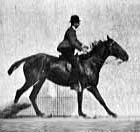Musculoskeletal System Overview - Anatomy & Physiology
|
|
Introduction
The musculoskeletal system includes bones, joints, cartilage, muscles, ligaments and tendons. In order to describe anatomical landmarks for example for the purposes of surgery and to be able to describe different directional information, for example when recording the view of a recently taken x-ray, it is necessary to have a way of describing the planes and axes that can be applied to the musculoskeletal system to pinpoint a specific anatomical area.
The Trunk
The trunk consists of three segments: thorax, abdomen, and pelvis, each of which is bounded by body wall and contains a cavity. The thoracic cavity lies cranial to the diaphragm, whereas the abdominal cavity lies caudal.
Dorsally, the roof of all three cavities is formed by the spinal column and associated muscles. The pelvic cavity is defined by the borders of the bony pelvis and communicates with the abdominal cavity. The bony thorax includes the ribs and sternum; the thoracic musculature is predominantly associated with respiration. Knowledge of the abdominal musculature is important when performing surgery on abdominal organs, and these muscles are traditionally divided into ventrolateral and sublumbar groups.
The Head and Neck
The shape and size of the skull varies widely, not only between species but also with age, breed and sex of similar species. The skull is divided into three components- the neurocranium, the dermatocranium and the viscerocranium. The skull also includes the hyoid apparatus, mandible, ossicles of the middle ear and the cartilage of the larynx, nose and ear. The skull protects the brain and head against injury and supports the structures of the face. In some animals the skull is also used for defensive actions, for example in horned ungulates such as red deer stags.
Pharynx
Syrinx
Limbs of the Dog, Horse and Cow
Forelimb
Hindlimb
Phalanges
Topographical anatomy
Test yourself with the Musculoskeletal Flashcards
References
Books
- Dyce, K.M., Sack, W.O. and Wensing, C.J.G. (2002) Textbook of Veterinary Anatomy. 3rd ed. Philadelphia: Saunders.
- O.Charnock Bradley The Structure of the Fowl, 3rd ed, J.B.Lippincott Company, 1950
- Konig and Liebich: Veterinary Anatomy of Domestic Mammals, 3rd Edition
Images
- Royal Veterinary College Histology Department
- Nottingham Veterinary School
